Photographs: Romeo Ranoco/Reuters
As India and other countries grapple with the swine flu, experts have warned that a new wave of the deadly virus is ready to explode and could stricken millions.
Its rapid spread would dominate the proceedings of the North American Leaders' Summit being held in the Mexican city of Guadalajara.
Health authorities and experts in Washington have warned governments across the world that the new wave of swine flu could badly hit people in the poor and least-prepared parts of the globe.
New wave of deadly H1N1 is ready to explode
Image: Visitors walk behind a NEC Avio Infrared Technologies Co's thermo graphic examination system for use in detecting the H1N1 virus at the Office Security Expo in TokyoPhotographs: Toru Hanai/Reuters
"The virus is still around and ready to explode," William Schaffner, an influenza expert at the Vanderbilt University School of Medicine who advises federal health officials, was quoted as saying by The Washington Post.
"We are potentially looking at a very big mess," he said.
Officials of the Obama Administration said the North America Leader's Summit would discuss the issue and their collective effort to tackle it.
"We will focus on preparation for responding to the H1N1 and the North American flu season," the National Security Advisor, General (retired) James Jones, told media persons while briefing them on the summit.
New wave of deadly H1N1 is ready to explode
Image: A woman and a boy wearing masks as part of preventive measures against the H1N1 flu walk on a street in Buenos AiresPhotographs: Enrique Marcarian/Reuters
"Everybody recognises that H1N1 is going to be a challenge for all of us, and there are people who are going to be getting sick in the fall and die," John O Brennan, the Deputy National Security Advisor said.
People have been dying over the past number of months from H1N1.
The strategy and the effort on the part of the governments is to make sure we do everything possible and we collaborate to minimize the impact, and make sure that the severity of the illness is kept at a minimum," Brennan said.
New wave of deadly H1N1 is ready to explode
Image: A pharmacist places boxes of Tamiflu on a shelf in SydneyPhotographs: Tim Wimborne/Reuters
"In addition to cooperating on the public health front and on the medical side, we want to make sure that we do everything possible to ensure the continuation of commerce, transportation, and trade between and among the three countries," he said.
"So in Guadalajara, the leaders are going to ensure that we are all talking to one another, that we are moving forward, and that we have a strategy for the coming weeks and months to deal with H1N1 across its many different dimensions," Brennan said.
As the virus is new, most people are not immune to it.
New wave of deadly H1N1 is ready to explode
Image: School girls wear protective masks as they stand outside their classrooms at an elementary school in Mexico CityPhotographs: Jorge Dan/Rueters
Starting with Mexico last spring, the swine flu has spread across 168 countries, with at least 162,000 confirmed cases and playing a role in 1,154 deaths including 436 in the United States. Six deaths have been reported in India.
As the virus is new and most people are not immune to it, experts suspect the second wave could be more severe than an average flu season, which hospitalises an estimated 200,000 Americans and contributes to 36,000 deaths.
"This epidemic will transmit faster than usual, because the population is more susceptible," Marc Lipsitch, a professor of epidemiology at the Harvard School of Public Health who has been helping the CDC project the severity of the upcoming wave, told The Washington Post.
New wave of deadly H1N1 is ready to explode
Image: Passengers wearing protective masks ride on Mexico's city subwayPhotographs: Daniel Aguilar/Reuters
"It's fair to say there will be tens of millions of illnesses and hundreds of thousands of hospitalisations, and tens of thousands of deaths. That's not atypical. It just depends on how many tens of thousands," he said.
"In a pandemic where a greater fraction of illness and deaths occur in kids and young adults that will be clearly noticeable to the public.
There will be a sense that this is a greater severity of illness even if fewer people die overall," Joseph Bresee from the Centres for Disease Control and Prevention told The Washington Post.

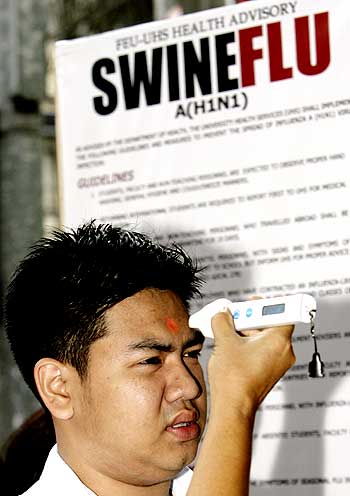

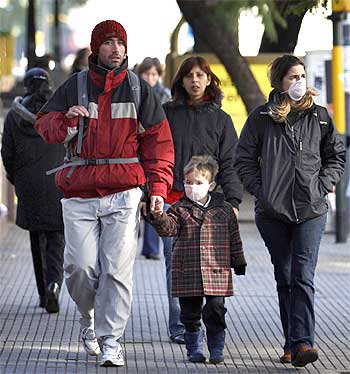
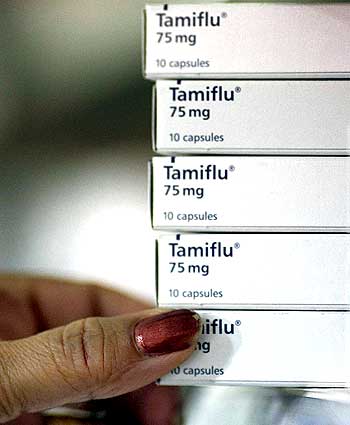
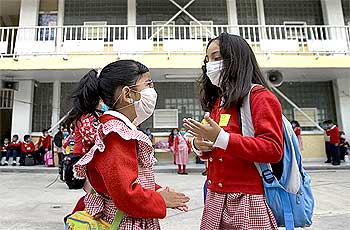
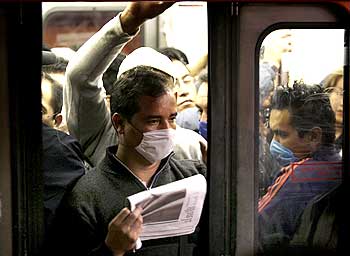
article